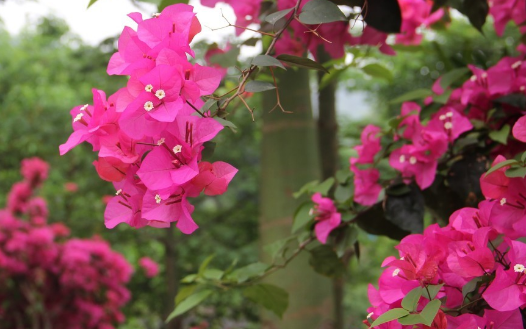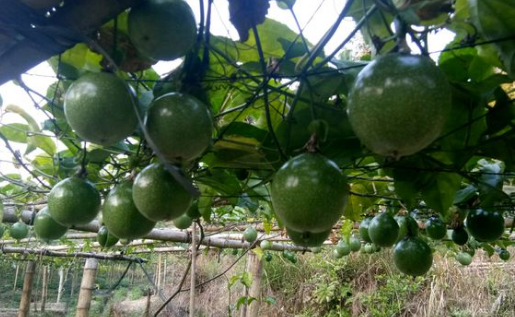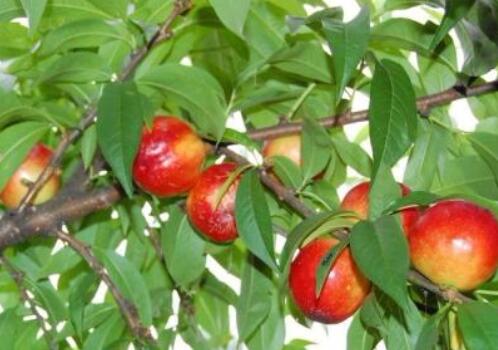When is the best month for cuttage of purple jasmine family triangulated plum? What is the method of reproduction? How to trim?
Triangulated plum is planted in courtyards and parks, and cultivated in greenhouses in the north. It is a beautiful ornamental plant. When is the best month for triangulated plum cuttings? What is the method of reproduction? How to trim? According to the data, the cuttage of Triangle Plum is the best before mildew from late May to early June.

First, when is the best month for triangular plum cuttage?
From late May to early June, cutting is the best before mildew.
Triangulated plum is very easy to cut: some varieties can survive as long as they grasp the season and can be planted in the soil at will, but some varieties are a little difficult to cut, so it is necessary to pay some attention.
1. Selection of cutting branches: the branches of Prunus mume, as thick as arms and as thin as incense, can be used for cutting; the roots of coarse branches are late and take shape quickly; annual lignified green branches are easy to produce new roots, and the survival rate is high. Generally choose 1-2-year-old outer layer sunny branches with compact and sturdy structure, (not too twigs, immature branches, only long branches, shade branches. Cut into 3-4 segments (about 8-10cm) with a sharp knife, the lower oblique cutting surface is 5-10 mm below the node, remove the lower leaves and retain the upper two and a half (full) leaves as cuttings.
two。 The cutting medium should be vermiculite, perlite + vermiculite, clean sand, sandy loam (plain soil). Put it in a basin and soak it in boiling water for several times before use and use after cooling. It can also be inserted with water.
3. Master seasonal cuttings. Hangzhou cuttings are best before mildew in late May to early June. (there are differences in different places, if there is an article that Hainan is the best in March of the following year in October, both in spring, summer and autumn in Fuzhou.) at this time, the temperature is suitable (20-30 degrees), high humidity and convenient management. First, use a small stick thicker than the cuttings on the substrate, and punch holes obliquely on the substrate. Insert cuttings with a depth of about 4-6cm, and water them in a slightly shady place for maintenance.
4. Maintenance: the light should be suitable: see sparse light within 15 days, (not too shady, sunshade about 50%), gradually strengthen the illumination, grow new roots in 20-30 days, and shine all day for about 25 days; only by fully accepting the sun can you make the new roots strong. Moisturizing: if the weather is dry within 20 days, keep the fresh-keeping film moisturizing and keep the ventilation hole. Open the ventilation in the evening, spray water and cover it again. Extra-root fertilization: spray 1/1000 potassium dihydrogen phosphate + urea once in about ten days. Watering: keep the substrate moist in the early stage (the air humidity is about 70%) and gradually "dry and wet" after 40 days.
Second, what is the method of reproduction?
1. Cuttage propagation
In the cutting should be prepared in advance, the first is the soil, you can prepare sandy soil, you can also add some perlite and peat in the soil. Then prepare flowerpots, ordinary plastic pots and pottery pots are fine. Finally, it is necessary to prepare the most important thing in the cutting process is the branches, to select the healthy branches that grow in that year.
Insert the branches 7-8 cm into the soil, leaving the leafy parts exposed to the soil. After the cuttage is finished, pour enough water, then cover the outside of the flowerpot with plastic film to prevent moisture loss, and finally put the flowerpot in a position with scattered light.
two。 High pressure propagation
The advantage of ① is that it is easier to survive. Branches that grow new roots can generally grow into new plants as long as the roots are not damaged and cut off and planted. Another advantage is that it is easier to shape. Branches propagated under high pressure are planted in new flowerpots and will soon grow into beautiful bonsai flowers as long as they are properly pruned.
② first cut a skin about 3 mm wide with a knife about two inches above the place where the high-pressure branch is connected to the female parent. Dirt the bread on the outside of the branch, then wrap it in a plastic bag and tie the two ends of the plastic bag tightly to prevent moisture loss. If the soil dries, it should be rehydrated in time. After about a month, you can see many roots growing on the branches, and at this time you can cut off the branches and plant them.
Third, how to trim?
Re-cut
Heavy pruning, you can tell from the name that the pruning must be very big. It is necessary to cut off basically all the branches, leaving only the tree stump and a few main branches, and the remaining several major branches should also be cut very short.
In particular, branches that are not needed should be completely cut off. Re-cut, listen to the name to know that there must be a lot of missing parts, so this trimming method is generally used in the case of changing the shape.
Middle scissors
In the middle and in the middle, it is natural that the specific gravity should be cut lighter, just cut off some dead branches and unnecessary branches, and the parts that grow well are only shortened, and the whole tree shape has not changed much. Medium scissors are generally used on shaped triangular plum bonsai.
Light shears
Just cut some weak branches short, diseased branches cut off, healthy branches cut short.
It is generally used on seedlings, seedlings and small trees. In order to preserve as many branches as possible, in order to form a strong tree potential in the future, so that the use of photosynthesis, so that the seedlings grow quickly.
Retract
Cut all the branches short so that the shape of the tree trimmed this year is not much different from the one that was just trimmed last spring.
In fact, the purpose of retraction is to free up enough space and leeway for plants to grow.
Sometimes the four pruning methods cannot be completely separated and must be combined organically.
Time: 2019-03-17 Click:
- Prev

The breeding methods and matters needing attention of eggplant golden fruit? What is fancy language? How do you breed?
Milk eggplant (scientific name: SolanummammosumL.), also known as golden fruit, Wuzhi eggplant, etc., so the breeding methods and points for attention of golden fruit? What is fancy language? How do you breed? According to the data, golden fruit likes a warm and humid growth environment, which requires sufficient light.
- Next

When do rose plums usually blossom and bear fruit? When will it be ready for market? What is the efficacy? What are the planting techniques?
The fruit of Dahong Rose Plum is very large, with an average fruit weight of 105.2 grams, crisp and refreshing, rich in juice, moderate sweet and sour flavor, fragrant, high quality and so on. In which month do rose plums usually blossom and bear fruit? When will it be ready for market? What is the efficacy? What are the planting techniques? I know from the Rosaceae data
Related
- Fuxing push coffee new agricultural production and marketing class: lack of small-scale processing plants
- Jujube rice field leisure farm deep ploughing Yilan for five years to create a space for organic food and play
- Nongyu Farm-A trial of organic papaya for brave women with advanced technology
- Four points for attention in the prevention and control of diseases and insect pests of edible fungi
- How to add nutrient solution to Edible Fungi
- Is there any good way to control edible fungus mites?
- Open Inoculation Technology of Edible Fungi
- Is there any clever way to use fertilizer for edible fungus in winter?
- What agents are used to kill the pathogens of edible fungi in the mushroom shed?
- Rapid drying of Edible Fungi

